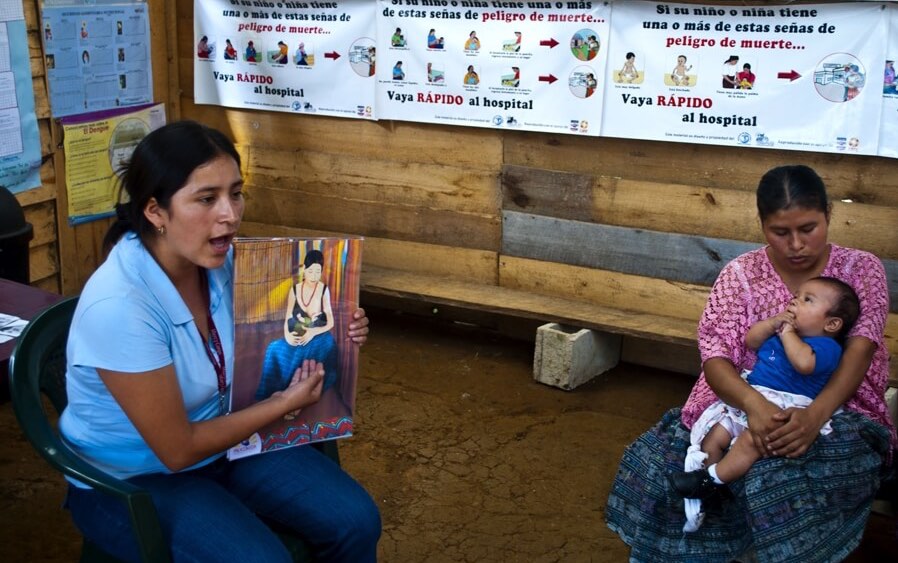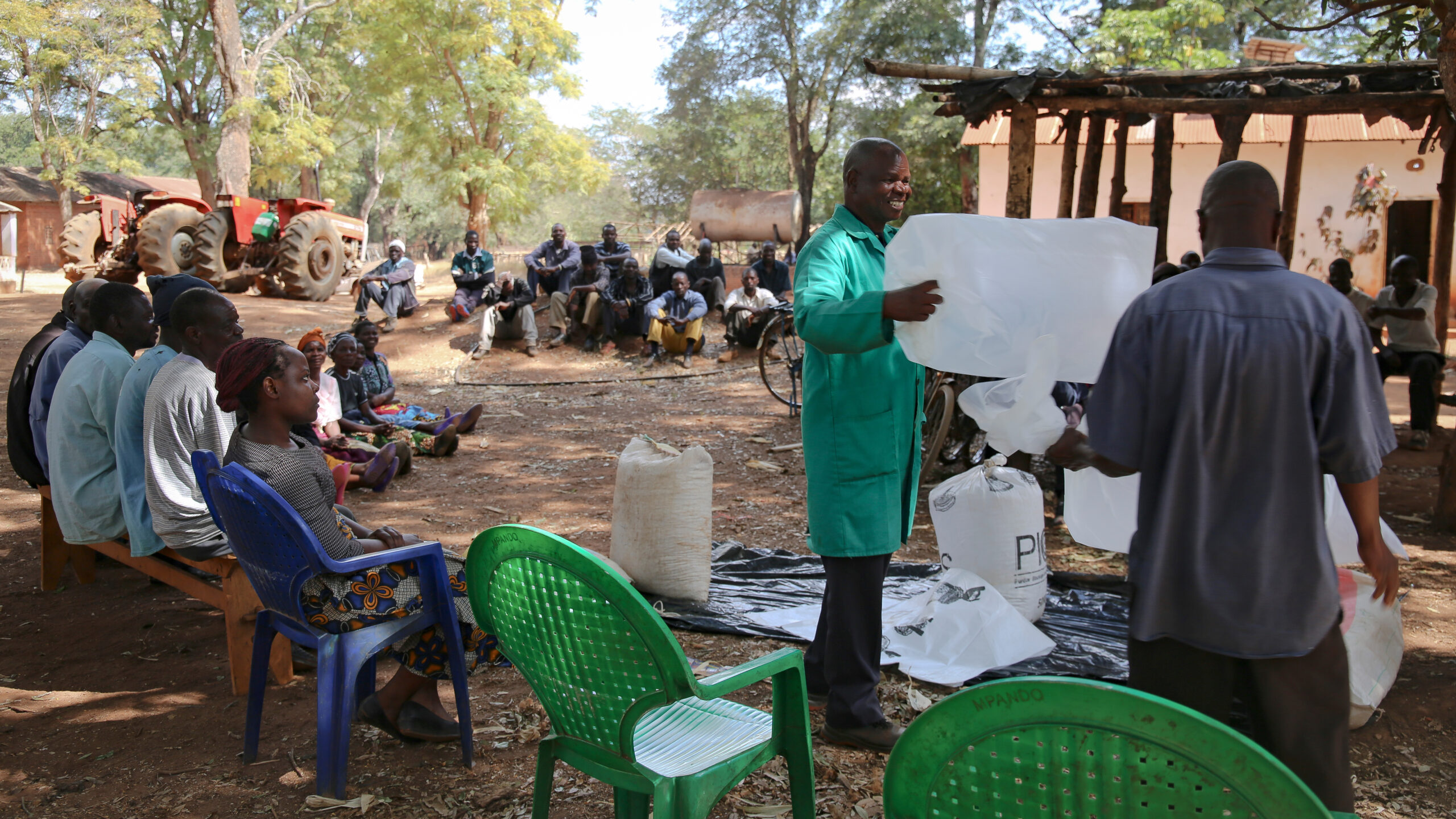This post is the third in a series on a research project in Guatemala and Burundi which evaluated how to optimize food assistance programs for maximum impact. Read the first here, second here, fourth here, fifth here, and sixth here.
Food-assisted maternal and child health and nutrition programs that incorporate food rations, a behavior change communication (BCC) strategy, and activities to improve the implementation and use of government-funded health services can improve child growth, evidence shows. But outcomes vary depending on program design. Do the quantity and composition of food rations affect intervention outcomes, and if so, how?
Strengthening the evidence base
The first 1,000 days of life (from conception to a child’s second birthday) are critical for child linear growth. Nutrition and health insults during this period can hamper physical and cognitive development and have lifelong health and economic consequences.
Multisectoral food-assisted maternal and child health and nutrition (FA-MCHN) programs aim to alleviate hunger and related problems. Traditionally, such programs targeted families with underweight children younger than 5. But a landmark 2008 IFPRI study in Haiti showed that preventive interventions—those that target all mothers during pregnancy and the first 6 months of lactation, and children between 6 and 24 months old—are more effective than traditional recuperative interventions that target children who are already underweight.
To build on the findings of the Haiti study, the U.S. Agency for International Development’s Office of Food for Peace commissioned rigorous evaluations of two parallel FA-MCHN programs—one in Burundi, focusing on the optimal timing and duration of these programs for preventing malnutrition in children under two, and the other, detailed below, in Guatemala, assessing the optimal quantity and composition of food rations.
The PROCOMIDA program
According to the 2016 Human Development Report, Guatemala ranks 125 out of 188 countries on the Human Development Index, and has the world’s sixth-highest rate of stunting among children under five (along with Yemen), at 46.5 percent. The department of Alta Verapaz in central Guatemala has one of the highest stunting rates in the country. The region is extremely poor, with low levels of education and high rates of illiteracy. At the same time, household hunger is uncommon in Alta Verapaz, and a majority of women aged 20 to 49 are overweight or obese.
In an effort to reduce stunting and other nutrition-related problems, USAID and Mercy Corps launched the five-year Maternal-Child Diet Diversification Program (PROCOMIDA) in Alta Verapaz in 2009, using the Preventing Malnutrition in Children under 2 Approach (PM2A). PROCOMIDA targeted mothers and children during the first 1,000 days with three primary interventions: Food rations, a behavior change communication (BCC) strategy, and activities to improve the implementation and use of government-funded health services. All pregnant women living in PROCOMIDA communities could enroll in the program and participate until their children were two years old.
The PROCOMIDA evaluation assessed the absolute impact of the program on stunting as well as the differential impacts of varying the size of the family ration and type of individual micronutrient-fortified ration. Understanding these differential impacts is particularly important because overweight and obesity are on the rise in Guatemala, raising the question of whether the provision of additional calories through large food rations is necessary.
To determine these impacts, IFPRI researchers Deanna Olney, Jef Leroy, Lilia Bliznashka, Marie Ruel, and colleagues carried out a longitudinal cluster-randomized controlled trial. One hundred twenty health convergence centers were stratified by size and randomly assigned to one of six study arms, which varied either the family ration size (full, reduced, or none) or the type of individual ration (corn-soy blend [CSB], lipid-based nutrient supplement [LNS] and micronutrient powder [MNP]) as follows: 1) full family ration + CSB (FFR+CSB); 2) reduced family ration + CSB (RFR+CSB); 3) no family ration + CSB (NFR+CSB); 4) full family ration + LNS (FFR+LNS); 5) full family ration + MNP (FFR+MNP); and 6) a control group that received no intervention.
The study used linear mixed-effects models and post hoc simple effect tests to assess the program’s impact on child linear growth. Absolute program impacts were determined by comparing the results of the intervention arms with those of the control. Differential impacts of the family ration size were assessed by comparing FFR+CSB with RFR+CSB and NFR+CSB. Differential impacts of the type of micronutrient-fortified individual ration were assessed by comparing FFR+CSB with FFR+LNS and FFR+MNP and comparing FFR+LNS with FFR+MNP.
The impact of PROCOMIDA
Effects on child stunting
PROCOMIDA significantly reduced stunting during the first 1,000 days. The impact was apparent in children by the age of one month in the FFR+CSB (-5.1 percentage points [pp]), RFR+CSB (-4.1 pp), and FFR+MNP (-3.8 pp) groups. Program impacts increased at children got older in the FFR+CSB and FFR+MNP groups, resulting in large and significant differences in stunting (-11.1 pp and -6.5 pp, respectively) compared with the control. Similar positive program impacts were found for length-for-age Z scores (LAZ) and length-for-age difference (LAD) in the FFR+CSB group.
In terms of size, the full family ration had a greater impact on linear growth outcomes than did reduced or no rations. In terms of the type of micronutrient-fortified individual ration, compared with the control, CSB and MNP were both effective in reducing stunting. LNS, however, was not effective in reducing stunting or in improving linear growth, and CSB was significantly more effective than LNS in reducing stunting, increasing LAZ, and reducing LAD.
Optimal size and type of food rations
The results of the PROCOMIDA evaluation show that FA-MCHN programs can reduce stunting during the first 1,000 days, even in relatively food-secure populations. Large family rations with individual rations of CSB or MNP were most effective. The growing impact as children age highlights the importance of intervening throughout the full first 1,000 days.
Deanna Olney and Jef Leroy are Senior Research Fellows with IFPRI’s Poverty, Health, and Nutrition Division (PHND) and Marie Ruel is Director of PHND; they were the principal investigators in the study. Tracy Brown is an IFPRI Senior Editor; she prepared the text of this post.
This post reviews results from “Impact and Cost-Effectiveness of the Preventing Malnutrition in Children under 2 Approach,” a USAID-funded research project in Guatemala and Burundi. The CGIAR Research Program on Agriculture for Nutrition and Health (A4NH), led by IFPRI, also provided support. Opinions expressed are the authors’.
Read the open-access article “PROCOMIDA, a Food-Assisted Maternal and Child Health and Nutrition Program, Reduces Child Stunting in Guatemala: A Cluster-Randomized Controlled Intervention Trial” in the Sept. 2018 issue of the Journal of Nutrition.







